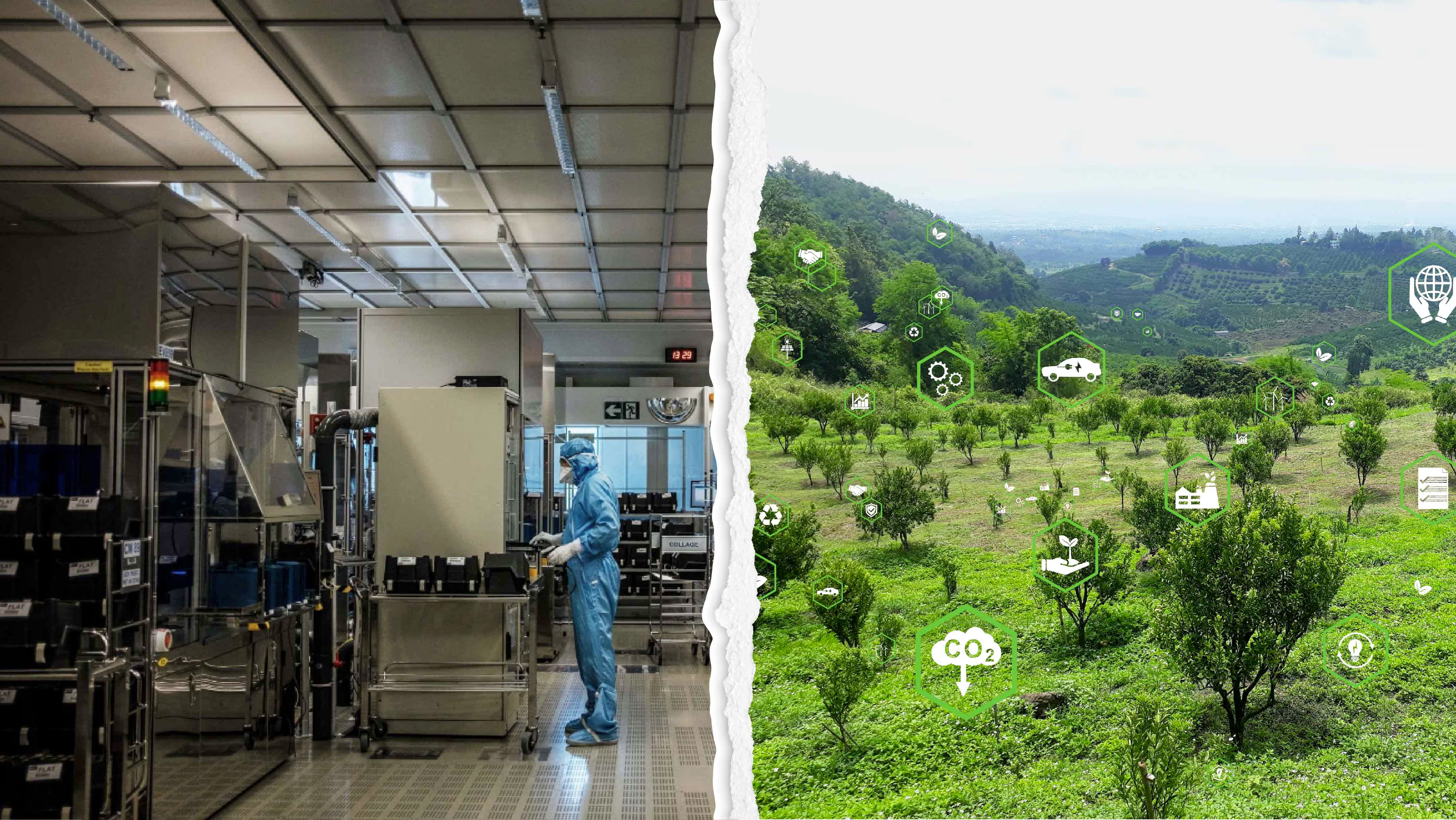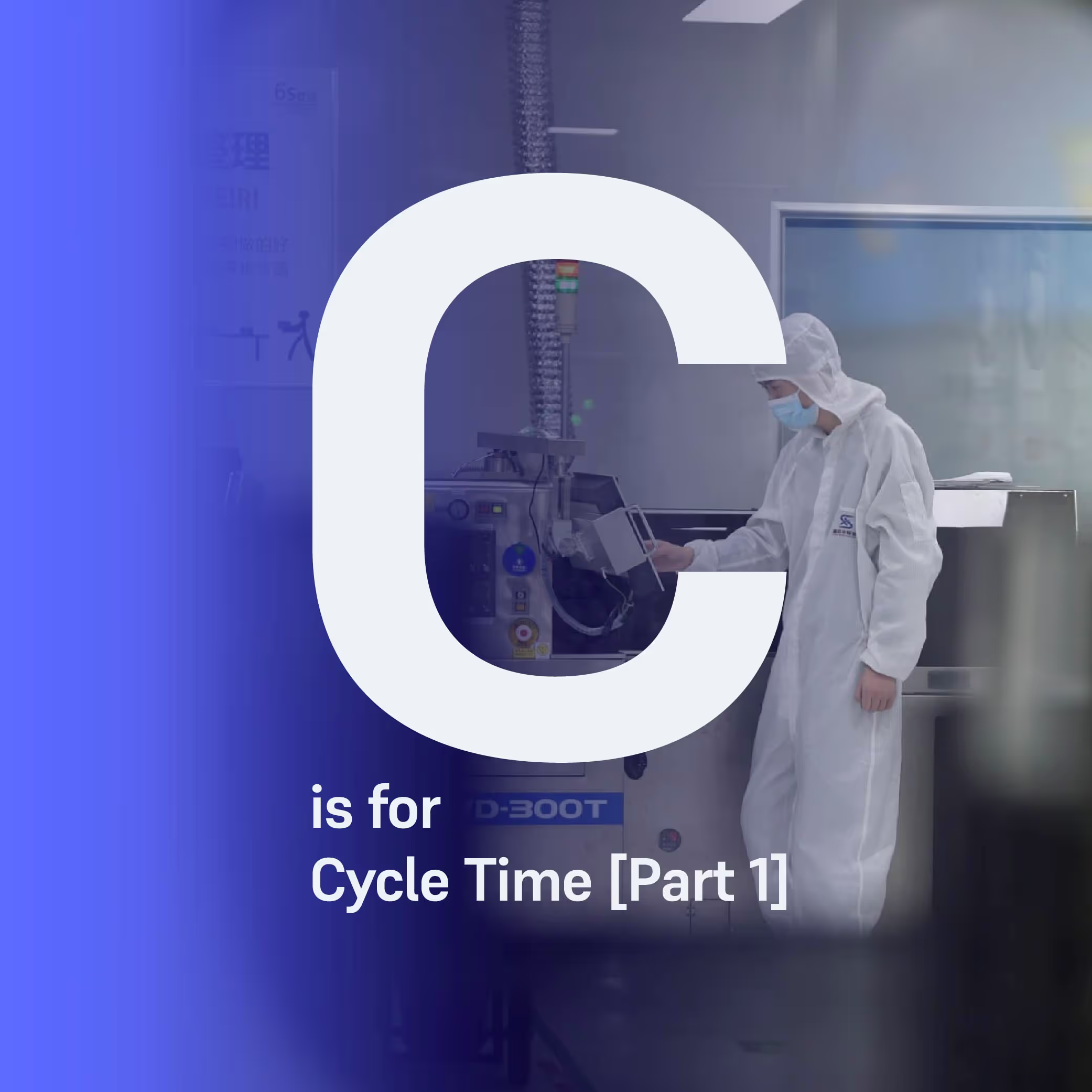Wrestling with Recipes
Insightful experiments expose the weakness of limiting the number of recipes enabled on a tool. The key findings are that this limitation can lead to an increase in fab cycle times by more than 40 percent.

Insightful experiments expose the weakness of limiting the number of recipes enabled on a tool. The key findings are that this limitation can lead to an increase in fab cycle times by more than 40 percent.
It’s not easy managing a fab. While the goals are simple – maximising the yield and throughput – execution is really hard. That’s partly because fabs churn out a range of products, produced within many tools and processes; and partly because the goalposts constantly shift, due to the dynamic nature of the environment.
Sometimes the need for change reflects success in the business. After winning a new order, those running a fab may need to develop and run new recipes before they can manufacture these latest products. Unfortunately, this requires manpower to implement, it could dictate the need for more regular maintenance of a tool, and evaluating KPIs could prove tricky.
At other times those that run a fab will have no warning of the need for change, and will be forced to make tough decisions at breakneck speed. If a tool suddenly fails to process material within spec it has to be taken off-line and assessed. Meanwhile compromised wafers are etched back and processed via a different route through the fab, potentially involving alternative tools running new recipes.
To simplify operations within a fab, many managers restrict some tools to processing only particular products. This is accomplished by limiting the number of recipes on selected tools. It’s a tempting option that might reduce tool maintenance, but it is not without risk. While the hope is that this course of action has negligible impact on the throughput of the fab, there is a danger that it could make a massive dent in the bottom line.
Up until now, fab managers have taken an educated guess at what the implications might be. But they would clearly prefer a more rigorous approach - and thankfully that is now within their grasp, due to the recent launch of our Optimization Scheduler.
To illustrate some of the powerful insights that can be garnered with our software, we have considered the consequences of restricting the use of tools within a hypothetical fab. Our key findings are that this can lead to a massive hike in waiting times at particular tools, and ultimately increase fab cycle times by more than 40 percent.
Complementary case studies
We reached these conclusions after performing a pair of complementary case studies. The first, considering a single randomly generated dataset, allowed us to take a deep dive into the frequency of use of particular tools and their corresponding wait times. The second, involving twenty randomly-generated datasets, allowed us to evaluate the impact of restricting the use of tools on the cycle times for the fab.
In the fab that we modelled there were six toolsets, each with four tools. All ran until the fab had carried out what we describe as 1000 work units – that is, the fab operated until it clocked up 1,000 steps across all lots through the modelled tools (one lot has one work unit for every step completed along its route).
For our first case study, which considered a single randomly-generated dataset, we distributed the work units between the toolsets in the following manner:
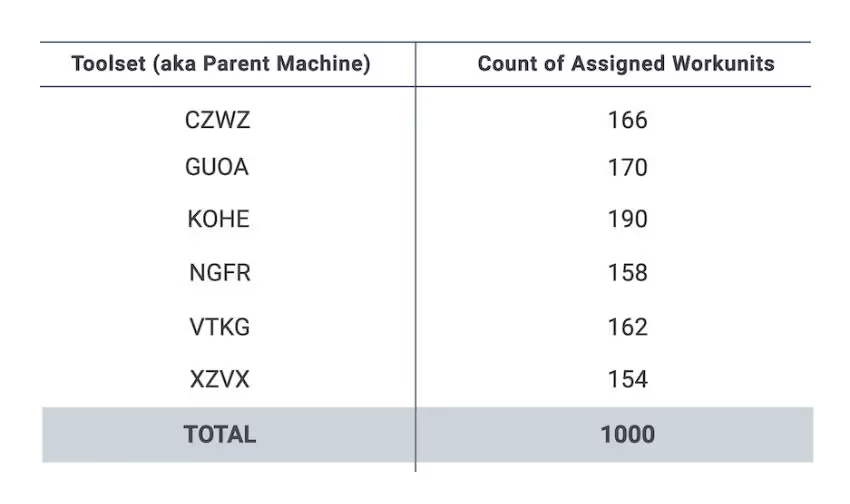
The objective of this case study was to examine how, if we were to vary the number of recipes enabled on tools, the corresponding wait times at tools would change. We simulated 4 different scenarios. In the most restrictive scenario, a work unit only had the option to be assigned to 1 tool (because only that tool had the recipe enabled). In the opposite, most generous scenario, a work unit could be assigned to any of the 4 tools within each toolset (because every tool has the corresponding recipe enabled).
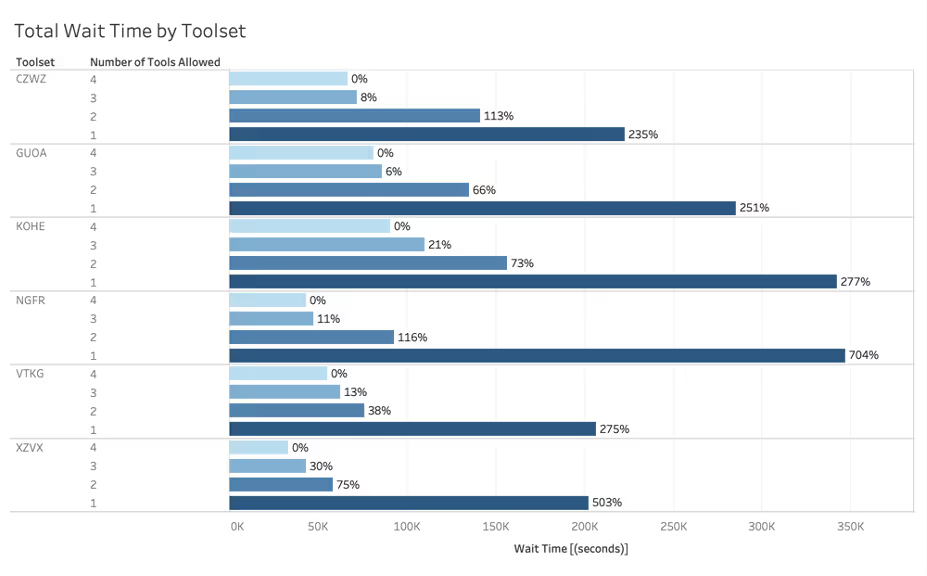
Clearly, restricting the number of tools has unwanted consequences on waiting times. For all six types of tool that we considered, a decline in recipe availability increased the total wait time. This is a non-linear relationship, with by far the greatest difference in wait time found when availability shifted from two tools to just one. The impact of having just one tool available is also tool dependent. For the six types of tool considered, the increase in wait time over baseline varied from less than 250 percent to just over 700 percent.
Of course, wait time is only a part of overall cycle time. To investigate the impact of tool availability on total fab cycle times, we considered twenty datasets, each with a slightly different distribution of work units allocated to toolsets. For this investigation we maintained our requirement for 1000 work units, undertaken by six toolsets, each with four tools.
For this simulation, we flexed the recipe availability and calculated the change in cycle time. We found that when the tools were available and capable of running all recipes, flexibility was high as it could be, allowing the fab to run at its full throughput. Reducing tool availability by limiting recipes led to a significant increase in cycle time.
Plotted in the graph below are increases in cycle time resulting from a reduction in tool availability. These values are relative to the theoretical minimum cycle time, realised when all four tools are available and flexibility maximised. While there is a variation in impact across the 20 datasets, the trend is clear: when tool availability reduces, cycle time takes a significant hit. Averaging the results across all datasets (depicted by the bold line) shows that when the proportion of tools available falls to 25%, cycle time lengthens by more than 40%.
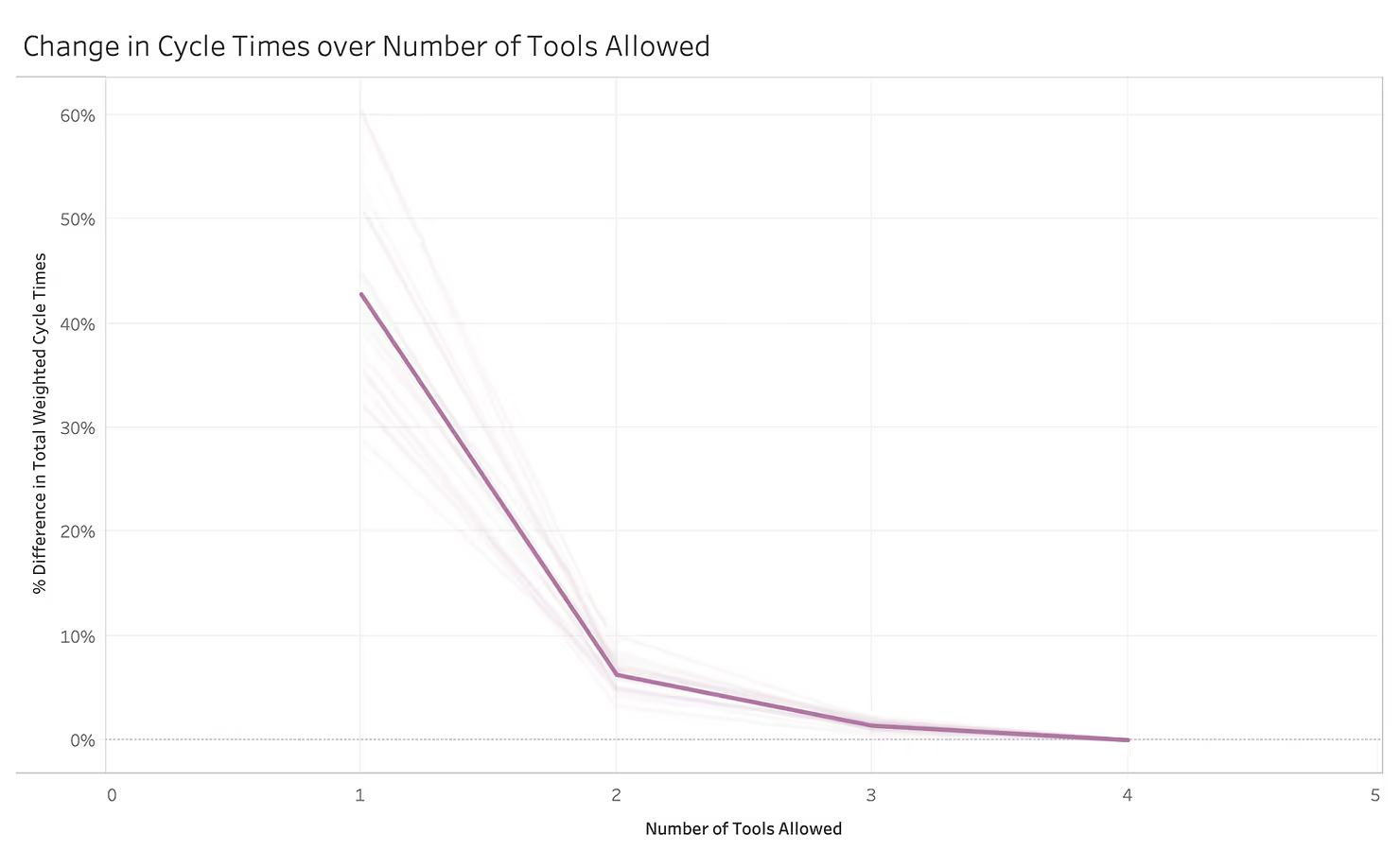
Conclusion
This pair of case studies, carried out with our smart scheduling software, has uncovered valuable lessons. While simplifying production by limiting the recipes run on toolsets may be tempting, that can cost a fab significant increase in cycle times. By utilising the "what-if" capabilities of our Optimization Scheduler, fab managers can run different scenarios for data-driven decision making and ultimately become more informed about the impact of their choices on the shop floor.
More resources
Stay up to date with our latest publications.






.avif)
.avif)

































.avif)
